| Date | Text | |
|---|---|---|
30 Nov 1942

University of Oxford |
University of Oxford (biology) The University of Oxford acquires the nearby Wytham Woods which become an important centre for research into ecology in England. |
|
30 Nov 1942
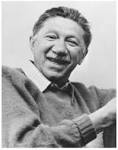
Abraham Maslow |
Abraham Maslow (psychology) Abraham Maslow proposes the Hierarchy of Needs theory of psychology in his paper "A Theory of Human Motivation". |
|
30 Nov 1942
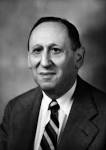
Leo Kanner |
Leo Kanner (physiology and medic) Leo Kanner of the Johns Hopkins Hospital first adopts the term autism in its modern sense in English in referring to early infantile autism. |
|
30 Nov 1942

Warren S. McCulloch |
Warren S. McCulloch (physiology and medic) Warren S. McCulloch and Walter Pitts publish "A Logical Calculus of the Ideas Immanent in Nervous Activity" in Bulletin of Mathematical Biophysics, considered seminal in neural network theory. |
|
30 Nov 1942
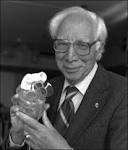
Willem J. Kolff |
Willem J. Kolff (physiology and medic) Dr. Willem J. Kolff builds the first dialysis machine, in the occupied Netherlands. |
|
30 Nov 1942

New Zealand |
New Zealand (physiology and medic) New Zealand-born British anaesthetist Robert Reynolds Macintosh introduces his new curved laryngoscope blade for tracheal intubation. |
|
30 Nov 1942

patent |
patent (technology) Lyle Goodhue and William Sullivan patent the refillable aerosol spray in the United States, for use with mosquito-repellant. |
|
30 Nov 1942

Abraham Buschke |
death Abraham Buschke Abraham Buschke (born 1868), German Jewish dermatologist (in Theresienstadt concentration camp). |
|
05 Jan 1943
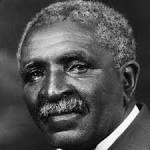
George Washington Carver |
death George Washington Carver George Washington Carver (born c.1864), African American agricultural botanist. |
|
07 Jan 1943
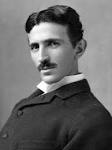
Nikola Tesla |
death Nikola Tesla Nikola Tesla (born 1856), Croatian-born Serbian American inventor. |
|
14 Jan 1943
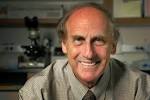
Ralph Steinman |
birth Ralph Steinman Ralph Steinman (died 2011), Canadian-born winner of the Nobel Prize in Physiology or Medicine (2011). |
|
24 Jan 1943

Carl Brigham |
death Carl Brigham Carl Brigham (born 1890), American pioneer of psychometrics. |
|
26 Jan 1943
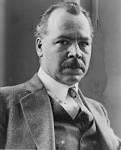
Nikolai Vavilov |
death Nikolai Vavilov Nikolai Vavilov (born 1887), Russian plant pathologist (in prison). |
|
05 Feb 1943
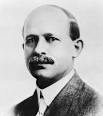
Charles Joseph Chamberlain |
death Charles Joseph Chamberlain Died 5 Feb 1943 at age 79 (born 23 Feb 1863). U.S. botanist whose major area of research was the cycad genera, palmlike, cone-bearing plants intermediate in appearance and structural features between tree ferns and palms. Before his work, little was known concerning the life histories, distribution, ecology, and diversity of cycads and other primitive seed plants. Making visits to Mexico, Fiji, New Zealand, Australia, and South Africa and Cuba (1904-22), Chamberlain collected specimens and gained information on critical stages in such plant development. Studying the primitive gymnosperms of the cycad family enabled him to postulate a course of evolutionary development for the spermatophyte (seed plant) ovule and embryo and led to speculation about a cycad origin for angiosperms (flowering plants). |
|
14 Feb 1943

David Hilbert |
death David Hilbert David Hilbert (born 1862), German mathematician. |
|
20 Feb 1943

cinder cone |
cinder cone (earth sciences) The cinder cone volcano Parícutin begins to appear in Mexico, giving volcanologists an unusual opportunity to observe its complete life cycle. |
|
01 Mar 1943

Colossus computer |
Colossus computer (computer science) December – Construction of British prototype Mark I Colossus computer, the world's first totally electronic programmable computing device, at the Post Office Research Station, Dollis Hill, to assist in cryptanalysis at Bletchley Park. |
|
05 Mar 1943
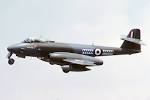
Gloster Meteor |
Gloster Meteor (technology) The Gloster Meteor, the first operational military jet aircraft for the Allies of World War II, has its first test flight, in England. |
|
23 Mar 1943

Vicodin |
Vicodin (pharmacology) The drugs Vicodin and Lortab are made in Germany. |
|
28 Mar 1943

Robert W. Paul |
death Robert W. Paul Robert W. Paul (born 1869), English pioneer of cinematography. |
|
08 Apr 1943
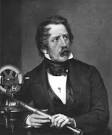
Kiyotsugu Hirayama |
death Kiyotsugu Hirayama Kiyotsugu Hirayama (born 1874), Japanese astronomer. |
|
09 May 1943

Colin Pillinger |
birth Colin Pillinger Colin Pillinger (died 2014), English astrophysicist. |
|
16 May 1943
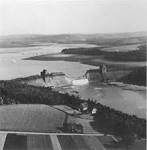
Operation Chastise |
Operation Chastise (technology) Operation Chastise: British Royal Air Force attacks German dams using 'bouncing bombs' designed by Barnes Wallis. |
|
17 May 1943
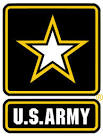
United States Army |
United States Army (computer science) The United States Army contracts with the University of Pennsylvania's Moore School to develop the ENIAC. |
|
06 Jun 1943
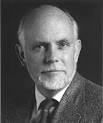
Richard Smalley |
birth Richard Smalley Richard Smalley (died 2005), American winner of the Nobel Prize in Chemistry (1996) for the discovery of a new form of carbon, buckminsterfullerene. |
|
10 Jun 1943
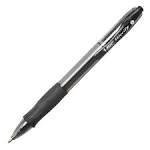
Ball point pen |
Ball point pen In 1943, Laszlo Biro filed for a British patent (No. 564172) on a practical ball point pen with quick-drying ink. Biro was a journalist, in 1938, in Budapest (also sculptor and hypnotist) when he took out a Hungarian patent for his first design of the pen. In 1940, he escaped the Nazis by going via Paris to Buenos Aires, Argentina. There a British entrpreneur, Henry Martin, saw Biro’s pen and realized its value for air crews making high altitude navigational calculations. It could write blot-free, unaffected by low or changing atmospheric pressure. Martin bought the rights and began small scale production of ballpoint pens for the RAF. In 1945, the Eterpen Co in Buenos Aires began commercial production. |
|
26 Jun 1943
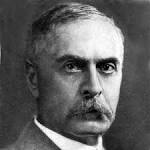
Karl Landsteiner |
death Karl Landsteiner Karl Landsteiner (born 1868), Austrian-born American Jewish physiologist. |
|
15 Jul 1943

Jocelyn Bell Burnell |
birth Jocelyn Bell Burnell Born 15 Jul 1943. British astronomer who discovered the first four pulsars. She was a Cambridge University graduate student, age 24, searching for quasars in 1967, when she noticed an unusual stellar radio signal - a rapid series of pulses repeating every 1.337 sec. This interstellar beacon was not man-made, so it was nicknamed in fun as LGM, for Little Green Men. In the next few months, Bell (her maiden name) found three more sources of radio pulses by careful scrutiny of hundreds of feet of pen-recorder paper. These represented a new class of celestial objects - pulsars - which astronomers eventually associated with superdense matter in the final stage of the evolution of massive stars. To date, hundreds more pulsars have been identified. |
|
21 Jul 1943
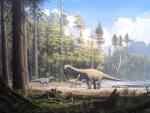
Mesozoic |
Mesozoic (biology) Living specimens of Metasequoia glyptostroboides, the Dawn Redwood, previously known only as a Mesozoic fossil, are located in China. |
|
23 Sep 1943

John Bradfield |
death John Bradfield John Bradfield (born 1867), Australian civil engineer. |
|
01 Oct 1943

Albert Stewart Meek |
death Albert Stewart Meek Albert Stewart Meek (born 1871), English-born Australian ornithologist. |
|
19 Oct 1943

antibiotic |
antibiotic (pharmacology) The antibiotic streptomycin (the first antibiotic remedy for tuberculosis) is first isolated by Albert Schatz in the laboratory of Selman Abraham Waksman at Rutgers University in the United States. |
|
14 Nov 1943

Frank Leverett |
death Frank Leverett Frank Leverett (born 1859), American glaciologist. |
|
20 Nov 1943

Bertha Lamme Feicht |
death Bertha Lamme Feicht Bertha Lamme Feicht (born 1869), American electrical engineer. |
|
07 Dec 1943

Nick Katz |
birth Nick Katz Nick Katz, American mathematician. |